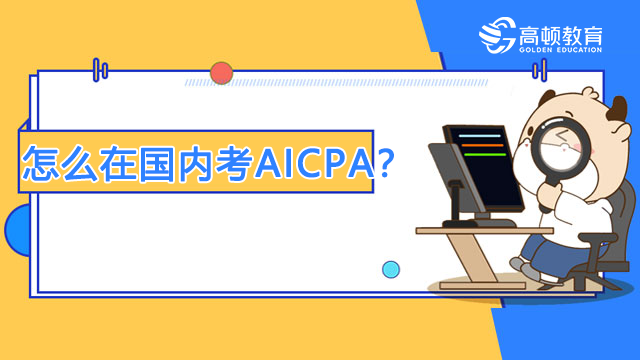AICPA考试信息技术IFRS内容转换思考(3)
Key differences between IFRS and GAAP & impact to financial/ business reporting
Transaction Differences
There are a number of differences between U.S.GAAP and IFRS.Below is a chart that highlights a few of these differences.
In addition to these transaction examples listed below,IASB and FASB are also working jointly on several MoU projects targeted for completion in 2010 and 2011.Major convergence projects include:
·Revenue Recognition
·Leases
·Financial Instruments
·Consolidations
·De-recognition
·Fair Value Measurement
·Financial Statement Presentation
·Financial Instruments with Characteristics of Equity
As these major MoU projects are completed and new standards are released by the FASB,these changes will impact how the transactions are recorded,processed and/ or reported within a financial system(most likely prior to converting to IFRS depending on the time of completion).
It is important to monitor both the FASB and IASB website for project updates on when the standards are under exposure draft(review)and ready for release(final).
Certain IFRS/GAAP differences may likely be adjusted through General Ledger journal entries or chart of account structuring and do not require system changes at the sub-ledger level.The approach will vary depending on the organization's structure and environment described above in Potential System Impacts of an IFRS Conversion.However,opportunities for automation using Excel macros and formulas or other alternative tools may be possible for separate journal posting calculations.Additionally,this list of examples will continue to change as the FASB and IASB continue their efforts to converge standards.
Exhibit 2
Transaction Differences
Impact to Financial or Business Reporting
Besides specific transactional differences,converting from U.S.GAAP to IFRS will also impact a company's external and internal reporting requirements.Although some transactional differences require only journal entry adjustments within the General Ledger(or minimal financial system changes),other changes may impact an organization’s current reporting infrastructure(such as data warehousing environment or associated reporting program).Furthermore,journal entry adjustments for multiple countries and parallel reporting in IFRS and GAAP may become cumbersome without additional tools to assist in the reporting process(such as a consolidation tool).Below is a chart that highlights some of these external and internal reporting examples.
Similar to the transaction differences,it is important to monitor both the FASB and IASB websites for MoUrelated project updates since several of these projects also relate to the financial reporting requirements listed above.In addition,the challenge to implementing these transactional or reporting changes is that organizations will still have to consider dual reporting once the entity decides to convert to IFRS.Companies will have to either(1)maintain both processes for statutory reporting until the three-year requirement is complete or(2)maintain one process and make topside adjustments to the other statutory reporting requirement.While both alternatives are achievable,option 2 can become cumbersome,difficult to track and not ideal/feasible.Explanation of the dual-reporting timeline is further discussed under Implementation Considerations.
Exhibit 3
External and Internal Reporting Differences
The AICPA's IFRS Primer for Audit Committees addressed two relevant IT-related questions that management should consider during the implementation process:
·How will this affect the company's way of doing business(e.g.changes to IT and other internal systems;risk monitoring and controls;inventory accounting;budgeting and forecasting;key performance indicators;joint ventures and alliances;subsidiaries;etc.)?
·How is management making system changes or implementing new systems today,in recognition of possible changes in the future?
As the above examples point out,transactional and reporting differences between IFRS and U.S.GAAP do affect a company's way of doing business.This leads to implementation issues to consider as a company decides to convert to IFRS.
USCPA教材试读-REG
真题高频考点,刷题全靠这份资料
USCPA-REG学习思维导图
梳理核心考点,一图看懂全部章节
USCPA考试公式大全
突破计算瓶颈,节省考试时间
- 美国注会考试考多少分及格?
-
uscpa一共有四门科目,每门考试的满分为99分,75分及格,但是这个75不是75%的正确率,不能被理解为百分比。
- uscpa一共几门几年考完?
-
uscpa总共考4门,一般单科成绩的有效期为18个月,大家需要在这个有效期的时间内,通过剩余的三门科目,否则第一门通过的考试成绩就作废,需要重考。因此,uscpa考试周期最长为18个月。
- uscpa一年能考几次?
-
NASBA和AICPA开启了连续测试期后,大家可以不受限制的全年参加uscpa考试。在uscpa的考试成绩公布后,如果大家发现自己没有通过考试,能够马上申请并参加该门科目考试,也不用再等待下一个考季才能申请重考。
- uscpa的含金量如何?
-
uscpa是美国正式的注册会计师国家资格,在美国拥有审计签字权,作为美国财经领域的三大黄金证书之一,在国内外都有着很好的知名度。很多外企招聘财务经理或财务总监岗位,都将持有uscpa证书作为优先录用条件。
-
AICPA该怎样备考?有没有什么资料推荐? 2023-08-29
-
USCPA的考试方式是怎么样的? 2023-07-18
-
uscpa网课有必要吗?零基础怎么学uscpa? 2023-05-05
-
2023年AICPA补学分怎么补 2022-12-29
-
AICPA考试的科目介绍是怎样的?考生应该怎样备考AICPA? 2022-07-26
-
AICPA报考对考生有什么要求?AICPA考试备考需要做什么? 2022-07-20
-
USCPA科目分别怎么备考?USCPA考前需要怎么做? 2022-07-20
-
USCPA考试科目着重考察什么?USCPA考试的题型分为哪几种? 2022-07-12
-
AICPA考试的内容有哪些?AICPA的备考方案是什么? 2022-07-07
-
怎样才能拿下USCPA考试?USCPA执照申请需要满足什么条件? 2022-07-07
-
USCPA具体的学习内容有哪些?学习USCPA如何利用好教材? 2022-07-06
-
USCPA考试对于国内考生的难点在哪?USCPA备考建议是什么? 2022-07-06
-
USCPA考试对于国内考生有什么难点?高效学习USCPA的方法是什么? 2022-07-05
-
USCPA考试考察的内容是什么?USCPA考试学习的建议有哪些? 2022-07-04
-
USCPA考试有什么内容?USCPA考试没通过心态如何调整? 2022-07-04
-
USCPA考试有什么内容?USCPA考试没通过心态如何调整? 2022-07-04
-
AICPA考试具体考察什么内容?应该怎么学习AICPA? 2022-06-22
-
USCPA考试难度在什么地方?有什么学习方法? 2022-05-30
-
USCPA考试哪一门最难?有什么学习方法? 2022-05-27
-
2022年USCPA备考有什么小技巧? 2022-05-27
-
USCPA考试是一个好考的考试吗? 2022-05-26
-
考USCPA怎么能提分? 2022-05-26
-
如何通过美国注册会计师考试? 2022-05-20
-
怎么在国内考AICPA? 2022-05-16
-
USCPA各科考试难度怎样? 2022-05-07
-
AICPA学习需要报培训班吗?培训有什么优势? 2022-03-23
-
2022年USCPA可以在哪些机构篇培训?靠谱吗? 2022-03-11
-
USCPA培训班哪个好?如何选择? 2022-03-10
-
USCPA选择哪里培训?选择培训需要考虑什么? 2022-03-09
-
UCPA该怎么选择培训班?哪里好? 2022-02-25
 更多服务
更多服务










































